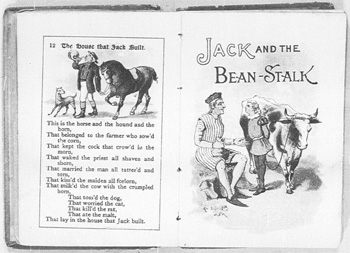Stephen Irwin is the animator behind this horrifically beautiful and mysterious film. Its heart is located right in the deep dark forests of fairytales, but its story is a conflagration that puzzles even while it astounds. Irwin slyly weaves two films together inside an old cathode ray TV tube to create his fascinating hybrid horror.
I posted about this filmmaker’s previous film, The Black Dog’s Progress.
You can visit the filmmaker’s site at SmallTimeInc.com.
 The traditional notion of where fairy tales come from suggests that people like the Brothers Grimm listened to oral folktales handed down through the generations and wrote them down with little embellishments. But now, in a book called Fairy Tales: A New History, Ruth B. Bottigheimer argues that fairy tales have a much more literary genesis than has been commonly thought. The Chronical Review has an
The traditional notion of where fairy tales come from suggests that people like the Brothers Grimm listened to oral folktales handed down through the generations and wrote them down with little embellishments. But now, in a book called Fairy Tales: A New History, Ruth B. Bottigheimer argues that fairy tales have a much more literary genesis than has been commonly thought. The Chronical Review has an 